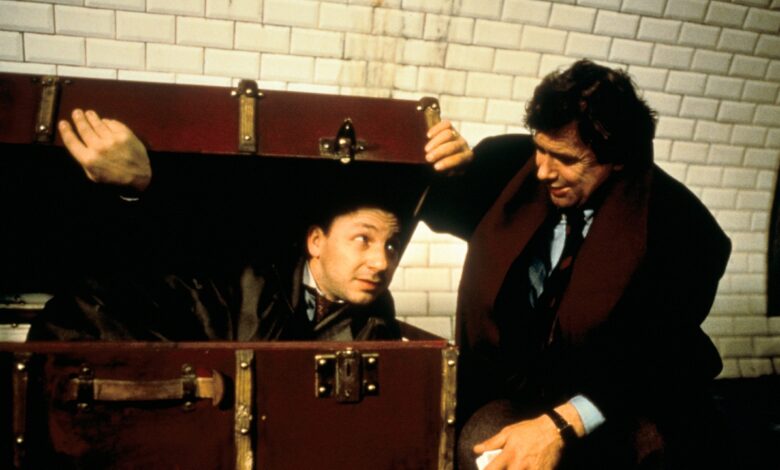Review Trois Couleurs: Blanc – Review on FilmTotaal

Director: Krzysztof Kieslowski | Screenplay: Krzysztof Kieslowski | Cast: Zbigniew Zamachowski (Karol Karol), Julie Delpy (Dominique), Janusz Gajos (Mikolaj), Jerzy Stuhr (Jurek), Aleksander Bardini (de notaris), ea | Time to play: 92 minutes | Year: 1994
With the colors blue, white and red you not only make up the French flag, but you also have the color palette of Krzysztof Kieślowski’s Trois Couleurs trilogy. The choice of these colors is not only visually important, but also refers to the basic principles that France defends (at least on paper) and which are liberty, equality and fraternity.
Although the three films are often mentioned together, you can safely watch them separately, because apart from a series of details that you see in each part, such as the old woman who tries to throw a bottle into a bottle bank without much success, the films have little in common in terms of story, not even with the characters. By making a trilogy, as a director you make sure that the films are judged with the same (strict) vision and to put it this way, this second part is the weakest of the three.
Much has to do with the fact that both blue in Rouge they were dominated by a strong (female) performance. In blue It was that Juliette Binoche who tries to cope with the death of her husband and her son in a special way, while in the third part Irène Jacob finds herself intrigued as a model by a judge who spies on her neighbors. In Three colors: white you have the stunning Julie Delpy, but unfortunately the Polish director focuses too much on the much less interesting Zbigniew Zamachowski.
The other two parts are set in the heart of Paris, Three colors: white it resides largely in gray Poland groaning under corruption. Blanc represents equality, or rather the lack of it. Krzysztof Kieślowski went for the rock-hard drama concept in his other two parts, but in Three colors: white it chooses the dark comedy path, and unfortunately that doesn’t always work out very well.
The story is about the beautiful Parisian Dominique who is married to the Polish immigrant Karol with whom she runs a barbershop. The fairy tale does not last long, because the man suffers from long-term impotence, reason enough for the French court to annul the marriage. Poor Karol tries to persuade his wife to give him a chance, but lust is bigger than the heart and before she knows it, the poor man ends up on the French metro as a beggar. Through a cunning plan, the Pole returns to his native country where he is given the chance to earn a handsome penny. The divorced man is curious how his ex will react when he finds out that his ex-husband has suddenly become rich.
Three colors: white Of course, it’s not a bad movie, because that just can’t be reconciled with the genius that is Krzysztof Kieślowski. However, this part lacks everything that made the other part so great and apart from an attractive female diva, it is also a captivating story that will haunt you for days. As a result, this second part is the weak brother of the trilogy, but it’s still cinematic to say the least.